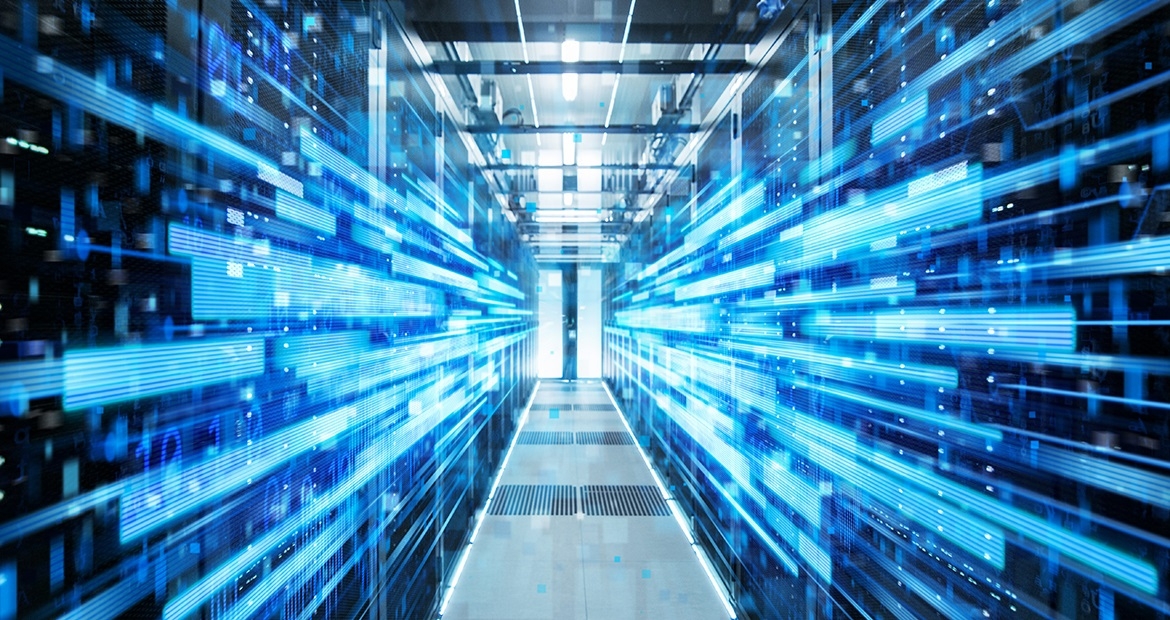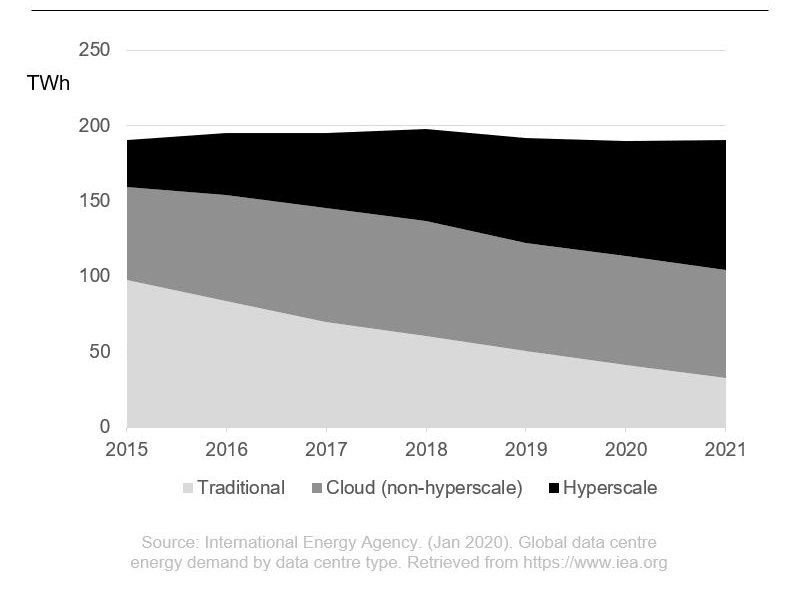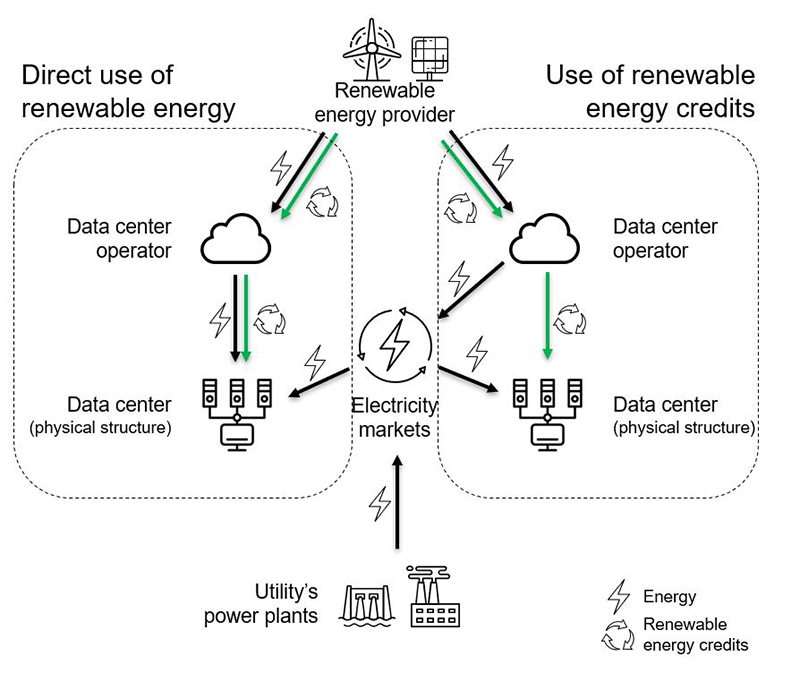Energy IQ: From decarbonization to on-site generation, three energy trends for data centers
By Aytek Yuksel, Content Marketing Leader - Power Systems

In 2017, a group of researchers estimated global data centers could use 25% of the world’s electricity by 2025 1. This is more electricity than any country in the world, including the U.S. You would be happy to hear this prediction is not materializing so far and you might be wondering, ‘how much energy and electricity data centers consume?’
The world’s data centers consume around 200 Terawatt-hours (TWh) of energy annually, almost all of it is electricity 2; this is about 1% of the world’s electricity consumption. While this is much lower than the prediction above, it still makes data centers a considerable consumer of energy. However, the data center industry has made significant progress to improve their energy efficiency. This has resulted in data center energy consumption to plateau in recent years. What is even more exciting is the industry’s ability to achieve plateauing energy consumption while successfully meeting its customers increased need for services.

Now that the basics around data centers’ energy usage are covered, let’s move into the three data center energy trends you would likely hear more frequently in the years ahead.
No. 1: Increasing environmental consciousness is driving a focus on decarbonization
From airlines to data centers, lowering carbon emissions and decarbonization are increasingly getting traction across most industries. In the process of using 200 TWh of electricity, data centers create a significant carbon footprint. This is because they commonly rely on the world's current power generation mix, which is still heavily fossil fuel based.
Two of the most popular decarbonization paths within the data center industry are the direct use of renewable energy sources and the use of renewable energy credits (RECs).
- Direct use of renewable energy sources: This is where a data center is fully or partially powered by renewable energy e.g. geo-thermal, hydro, solar, and wind. While this is the more environmentally beneficial approach, it is also more challenging due to the intermittent nature of renewables. Data center operators rely either on existing electricity markets or in some cases, energy storage options to manage this challenge.

- Use of renewable energy credits (RECs): In this scenario, the data center operators purchase renewable energy and associated RECs. In cases where the renewable energy is produced in a location far away from the data center, the operator sells the renewable energy back to the grid and uses RECs to offset its carbon footprint. This is a common approach across the data center industry, and partially what makes Google the largest corporate buyer of renewable energy in the world 3. Here is how this approach is beneficial: it gives the renewable energy provider the customer commitment to invest in new projects, even if the renewable energy is not necessarily used by the data center. In other words, this approach delivers an increasing amount of renewable energy to the grid for all of us to use. Meanwhile, critics highlight that this approach doesn’t necessarily reduce the data center’s carbon contribution.
These two approaches are expected to co-exist in the data center industry’s path towards decarbonization.
No. 2: An increase in on-site energy generation
Data centers commonly rely on the grid as the primary source of electricity. While relying on the grid is convenient, the continued expansion of data centers could put extra stress on existing grid infrastructure causing grid instability. In some regions, data center growth and energy demands could outpace grid infrastructure capability and investment. To address these challenges, some data center operators may deploy on-site power generation.
Photovoltaic (PV) arrays, natural gas generator sets, and fuel cells are common sources of on-site generated power. These sources are also known as distributed energy resources (DER) and may operate connected to the utility or isolated from the utility (known as island operation) as a microgrid. Stationary energy storage may also be incorporated into a microgrid enhancing the ability to operate isolated from the utility.
On-site power generation allows a data center operator to use power from cleaner sources when available, while supplementing energy from other sources when the cleanest source is not sufficient. This feature of on-site generation supports advancement towards sustainability goals while maintaining reliable power service to the data center.
No. 3: Rising focus to achieve higher levels of energy efficiency
Data centers offer vast opportunities for energy efficiency, and the industry has taken full advantage in recent years. Let's cover two aspects of energy efficiency in a data center.
- IT infrastructure: Historically, data centers improved energy efficiency of IT infrastructure through higher utilization of individual IT equipment and server virtualization. Going forward, converged infrastructure (CI) and hyper-converged infrastructure (HCI) are expected to lead energy efficiency gains in data centers. Simply put, CI features building blocks made up of storage and compute functionalities physically combined in a turnkey product. Meanwhile, HCI relies on a software to combine compute, storage and networking functionalities. Both technologies, in different ways, deliver a more scalable architecture helping with energy efficiency. Within a data center, to deliver the same computing output, you can afford to have fewer servers, storage and network equipment if you are using one of these technologies.
- Non-IT infrastructure: Power usage effectiveness (PUE), the ratio of total energy used by the data center to the energy used by computing equipment, is a common indicator of a data center’s energy efficiency. The industry average PUE has improved from 2.5 in 2007 to 1.67 in 2019 4, a clear indicator of shrinking contribution of non-IT infrastructure, heating, cooling, lighting and others, in a data center’s energy consumption. Going forward, advancements in cooling systems will take center stage in energy efficiency gains within non-IT infrastructure. Natural cooling, where cool ambient air or chilled water from nearby resources are used to cool the facility, will impact the geographical locations of data centers. Additionally, an increased prominence of liquid cooling technologies will impact data center cooling system designs. Meanwhile, on the IT infrastructure, the expanding need for IT equipment to operate at higher ambient temperatures will reduce the need for cooling per computing capacity.
It is expected facility and energy professionals leading comprehensive energy efficiency plans covering IT and non-IT infrastructure will stay ahead of their peers in energy efficiency gains.
Sign up below for Energy IQ to receive energy focused insights periodically. To learn more about the data center power solutions Cummins Inc. offers, visit our webpage.
Think your friends and colleagues would like this content? Share on LinkedIn and Facebook.
References:
1 Lima, J. M. (December 12, 2017). Data Centres Of The World Will Consume 1/5 Of Earth's Power By 2025. Data - Economy. Retrieved from https://data-economy.com/
2 Global data centre energy demand by data centre type. (January 7, 2020). International Energy Agency. Retrieved from https://www.iea.org/
3 Pichai, S. (September 19, 2019). Our biggest renewable energy purchase ever. Google. Retrieved from https://www.blog.google/
4 Lawrence, A. (May 2019). Is PUE actually going UP?. Uptime Institute. Retrieved from https://journal.uptimeinstitute.com/
Author Profiles

Aytek Yuksel, Content Marketing Leader - Power Systems
Aytek is a marketing leader at Cummins, focusing on technology and thought leadership. Since joining in 2008, he has held various marketing roles and now shares insights on markets, technologies, and energy transition. Aytek lives in Minneapolis with his wife and two kids.
Related Tags